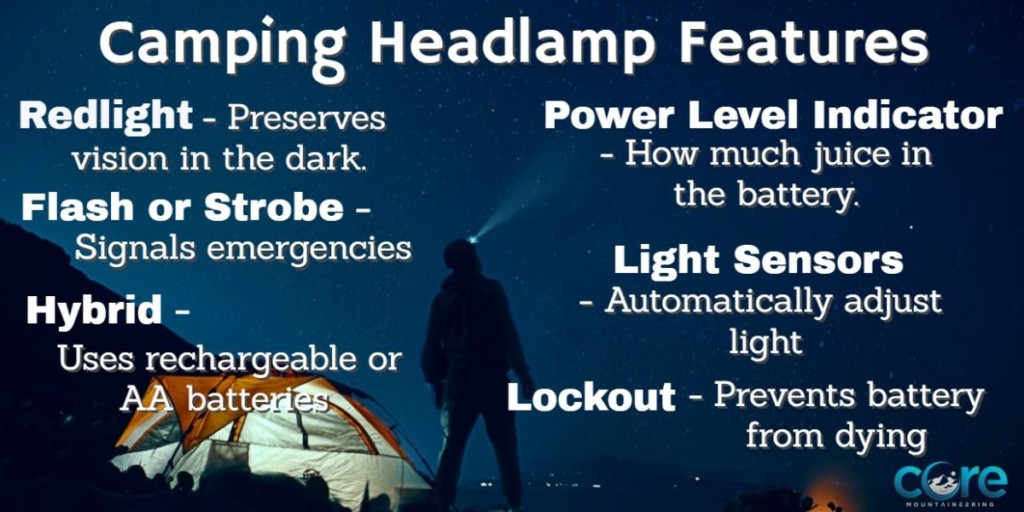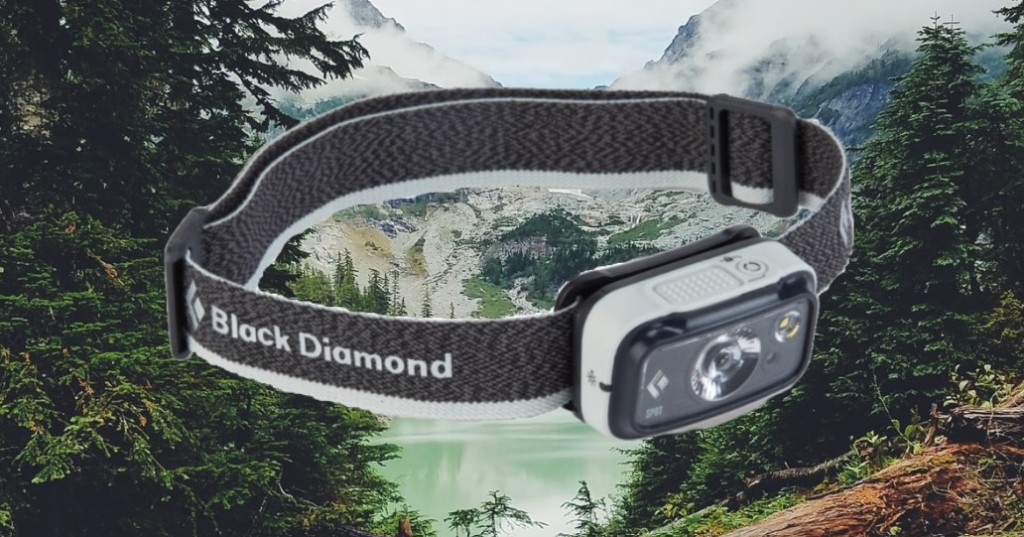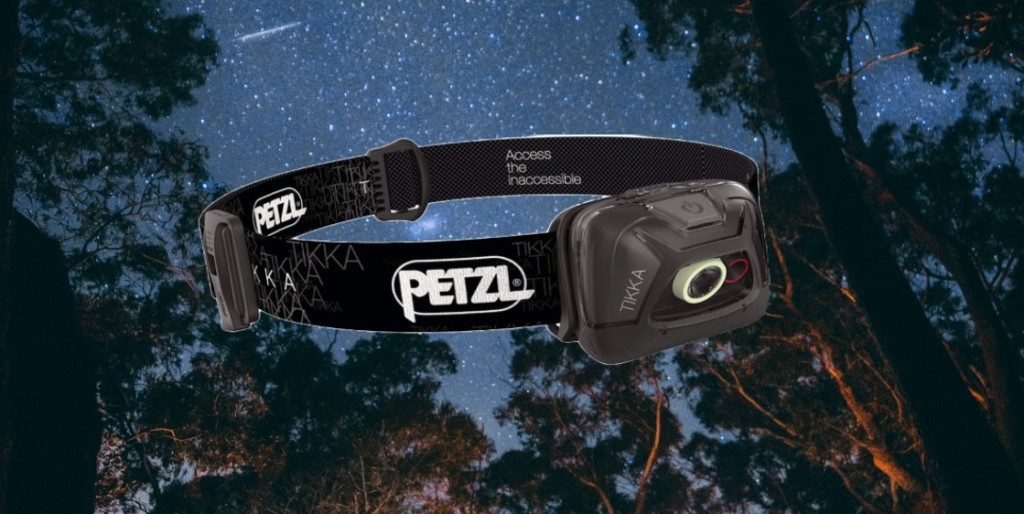Nothing beats a hands free headlamp when getting camp ready at night. There’s no fumbling around with a flashlight and the risk of dropping it. They have many functions and light settings, but what are they all used for? The red light on your headlamp is made to safeguard your vision. While also not blinding people you’re camping with. Let’s look into all the features of headlamps.
Why Do Camping Headlamps Have Red Lights?
It Keeps Your Eyes Adjusted to the Dark
Red lights are used in many places where the rooms have to stay dark. Military bunkers, stargazing, and anywhere you might find yourself working in the dark. The red light gives you light to see, while at the same time keeping your eyes adjusted to the darkness.
While looking for something in your tent with a red light, you can immediately adjust back to the dark once the light is turned off.
Won’t Blind Other Campers You’re With
Everyone has noticed when a light is flashed in our eyes; it’s blinding for a few moments. If you have ever tried talking to someone with there headlamp on pointing towards you. You’ll find yourself just looking down the whole time. You can’t see at all.
This is the same reason police officers will shine their Maglite on someone’s face. The officer can see you, but you’re unable to see them. This virtually immobilizes the person with the bright light shining on them.
Use the red light around camp and in your tent to be courteous to others.
Attract Less Bugs
I’ve always heard this since I was little. Use the red light to attract fewer bugs. It turns out part of the reason fewer bugs are attracted to a red light is the reduced intensity of the light. In this article from Science Alter, they found Yellow light to be the best shade to avoid bugs. Overall, incandescent light bulbs pulled in the highest number of insects, followed by CFL, halogen globes, and cool-colored LEDs.
Red light at Night Makes It Easier to Read Maps
Sometimes before I go to sleep, I want to be 100% sure of where I’m going the next day. I plan my trip before even going up the mountain but reassurance, helps me sleep.
A regular white light blaring down on paper, back to my eyes will be disturbing. I use a red light at night to read maps and books to prevent this.
Will Not Disturb and Attract Nocturnal Animals
We go out in nature because we enjoy seeing and feeling things we don’t usually do, in our day to day lives. We feel at peace in the outdoors. Part of our responsibly is not disturbing nature as much as possible.
Bright lights from our headlamps are disturbing to nocturnal animals. With a dimmer red light nature will be less affected.
Use Your Red Light for Emergencies
Being lost at nighttime in the woods is a scary thing. Major doubts of where you have been or if you’d walked too far creep in our minds. A regular flashlight might not be as noticeable as a red light in the dark. Using a yellow light might make you blend into the reflection of the moon.
Red light can make you stand out, but a flashing strobe will be even better. This is of course if your headlamp is equipped with one; which I always recommended.
Best Features on a Camping Headlamp
Choose a hiking headlamp or also called headtorch with the features and accessories that are most important to you. The best headlamp will be a balance of essential functions, weight, runtime, and price. It’s a good practice to try a new headlamp or flashlight out before going on your next camping trip.
Lumens
Quick and dirty, lumens equals brightness. Lumens is a measure of the total quantity of visible light emitted by a source per unit of time. A lumen is not a watt. A watt is an amount of energy required to power the light source. You have noticed the changes to light bulbs using fewer watts as we transition to LED bulbs over conventional, incandescent bulbs.
Power usage is a concern, but we’re not as concerned about wattage use. The focus is on lumens and runtime because headlamps are individual units, with an independent power source (battery).
When selecting a headlamp, lumens will range from 50 to 700. This is just a normal range for headlamps. So I’ll choose the headlamp with the highest lumens and call it a day! Not quite.
Beam Type and Light Pattern
The Beam or Pattern of light matters just as much. Having a headlamp with 950 lumens that shoots a beam out to spot a squirrel a 100 yards away would be blinding to read a map with. Fenix headlamps have a very tight beam. All of their headlamps do have multiple power settings and will work for camping they might not fit everyone’s tight campsite needs.
I’m not picking on Fenix headlamps, they are very high quality, but they might be better suited on a construction site. I see them all the time in my line of work, the power industry.
Most headlamps will have a few different setting for the beam: a high-intensity straight light and wide floodlight. The floodlight mode is probably what I use most of the time when in camp. The straight beam is better suited to use when walking back to my tent, after staying just a little too long fishing while the sun goes down.
Headlamp Beam Distance
Knowing the distance, you’ll be able to see with the beam is just as important as looking through all the features of a headlamp. The total usable beam distance will show you how far down the trail you’ll be able to see.
Let’s take a look at the Petzl Actik Core. It has a beam distance of 272 ft. Compare that distance to the Petzl Tikkina with a beam distance of 196 ft. While these two headlamps look the same and both made by Petzl you would be buying two very different headlamps.
A headlamp with a long beam distance can be overkill if not needed. With a longer beam distance, the battery is going to take a beating, depleting fast. Beam distance from the manufacture is when batteries are full. As the battery drains, the draw distance and overall performance will deplete as well.
Headlamp Battery Burn Time
Run time is how many hours the light will be usable. When looking at headlamps, it’s essential to remember that the manufactures run time or burn time will most likely be at minimum low light usage. It’s critical to know how long a full charge will give you. This can prevent an emergency when hiking back to camp or your car. Have some spare batteries in your pack if possible.
Size and Weight
As hikers, weight savings is always at the forefront of our minds. Finding a balancing act of a battery that meets our needs but not too heavy on our heads can be a challenge. A more massive, feature-rich headlamp will more than likely also have a larger battery capacity.
The Nitecore NU25 is very lightweight at 1 oz. and only 1.8 oz. with a head strap. The downside is the quick burn time at only 5 hours.
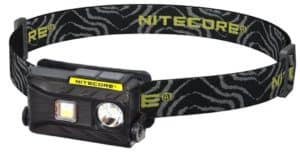
On the other end of wight and battery life is the Black Diamond Spot 325 Headlamp. This is on the heavier side at 3.5 oz but with a runtime of 60 hours.
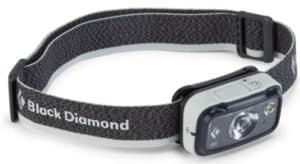
A few ounces might not seem like a lot, but with something sitting on your head for hours, you can start feeling the weight, becoming uncomfortable.
Water Proof and Water Resistance Headlamps
Water-resistance is a must when looking to use a headlamp in the outdoors. All the ones you’ll see here are at least water-resistant.
When looking for a camping headlamp, the standards generally come in IPX ratings. The IP Code, or Ingress Protection code you’ll see from the manufacture rates the degree of protection provided by the casings and electrical enclosures against water and dust.
An IPX score is a rating to determine how water and/or dust resistant a headlamp is. For the most part, it goes from IPX0, which is the lowest and up to IPX8 at highest.
The Black Diamond Spot 325 Headlamp mentioned above has the highest rating of protection, IPX8. This means it has been merged in over one meter of water and still functional.
AA, AAA or Rechargeable Batteries
This is going to come down to personal choice. I prefer to quickly slap in a new set of batteries instead of worrying if I brought the right charger or not. I do use a small portable solar panel when I’m going to be out of a few days, but still like the convenience of AA batteries.
Headlamps with rechargeable batteries also have the option to get an external, larger pack. These also tend to have a mini-USB recharging option. So you might have the cable already laying around for a replacement if you ever lose the one included.
Other headlamp Features to Look for
- Tilt – A handy feature of positioning the light down or up. This can save your neck from straining in an uncomfortable position.
- Button Configuration – Are you going to be using your headlamp with gloves on? Some have sliding buttons to turn on while others use multiple clicks, for different settings.
- Detachable Headlamp – Some headlamps are dual purpose. The head unit can be removed, giving you a handheld flashlight.
- Power Level Indicators – Shows how much juice is left in the battery.
- Timeout – Simply shuts off the light after a preset time, saving battery life.
- Lockout – Nothing is worse than when you need light only to find it’s been sitting in your hiking backpack on for hours. This feature will keep the light off until deliberately unlocked.
- Light Sensors – Automatically adjust to the reflection of light in the room. Just how your cell phone screen works.
These extra features are helpful to have but not necessary must-haves. A simple headlamp with just a few basics should fit most peoples needs. Let’s look at the top recommend headlamps that have been proven, winners.
Best Headlamps for Camping and Hiking
All of these feature red lights as well as water resistance or waterproofing.
Petzl E02 P2 e+LITE Headlamp (0.95 oz)
If you don’t like any weight on your head and want to lightest possible headlamp that will still function well, look at the Petzl Eo2 P2 e+lite headlamp. Weighing under one ounce, it can clip to your hat and lightweight enough to stay around your neck.
The lightweight comes at a cost, though. It is only 26 lumens at max brightness. The low amount of light is gentle on the battery, lasting 40 hours of continuous runtime. Check the rest of the features and current price on Amazon here.

There’s a wide range of options and endless choices. I hope you have found this posts helpful and if you’re looking for other gear recommendations head on over to our gear page. I recommend other gear with everything being tested by me—many pieces of gear like dry bags and backpacks I’ve spent tons of hours and research on. Please check out The Recommended Gear page here!


